... but for those who stormed the D-Day Beaches, and in perpetuity lie in the soil of Normandy, their ambitions, aspirations and desires were never to be ....
I spent today visiting some Commonwealth cemeteries, and the site near the town of Saint-Germain-la-Blanche-Herbe where twenty Canadian POWs were murdered in June 1944.
Massacre de l'abbaye d'Ardenne ...
As many as
156 Canadian prisoners of war are believed to have been executed by the 12th SS
Panzer Division (the Hitler Youth) in the days and weeks following the D-Day
landings. In scattered groups, at various pockets within the Normandy countryside,
they were taken aside and shot.
A total of
20 Canadians were executed near Saint-Germain-la-Blanche-Herbe at the Abbaye d'Ardenne (Ardenne
Abbey). The site is a massive collection of mediaeval buildings, including an early Gothic
church and several farm buildings, encircled by walls and surrounded by
grain fields. This was where Kurt Meyer, Commander of the 25th Panzer Grenadier
Regiment (of the 12th SS Panzer Division), had established his headquarters.
On June 7
(D+1), the Germans were counter-attacking the Allies in force. The North Nova
Scotia Highlanders, supported by tanks from the 27th Canadian Armoured Regiment
(The Sherbrooke Fusiliers), were engaged in heavy fighting around Authie.
Several of the Canadian Armoured Regiment tanks were disabled resulting in the infantry being overwhelmed.
The abbey
quickly filled with Canadian POWs captured during and after the fighting. Ten of them
were randomly picked and dispatched to the chateau adjacent to the abbey; the
rest were moved to Bretteville-sur-Odon. An 11th POW, Lieutenant Thomas Windsor
was brought out to join the group after the first ten men had been selected.
That evening, the 11 POWs were taken to the chateau's garden and murdered.
Several months later, six of the bodies were discovered with crushing blows to
the head. Four more were found afterwards; it was evident they had been
shot in the head.
The 11 executed Canadians are …
Private
Ivan Lee Crowe
North Nova
Scotia Highlanders
Service
Number F/56043
Murdered 7 June 1944, aged 22
Born November
17, 1921 New Glasgow, Nova Scotia
Enlistment February 1, 1943, Halifax, Nova Scotia
Son of
Arthur D. and Clara M. Crowe, of Stewiacke, Colchester Co., Nova Scotia
Buried Bretteville-Sur-Laize Canadian War Cemetery
Private Charles Doucette
North Nova
Scotia Highlanders
Service
Number F/55317
Murdered 7 June
1944, aged 31
Born July 15, 1912, Sydney, Nova Scotia
Enlistment June 19, 1940, Sydney, Nova Scotia
Son of
Peter and Mary Doucette of Sydney, Nova Scotia. Husband of Mary Jane Doucette
of Sydney, Nova Scotia
Buried Beny-Sur-Mer Canadian War Cemetery
Corporal
Joseph Francis MacIntyre
North Nova
Scotia Highlanders
Service
Number F/55009
Murdered 7 June 1944, aged 28
Born February 29, 1916, Sydney Mines, Nova Scotia
Enlistment March 20, 1940, Sydney, Nova Scotia
Son of
Daniel and Florence MacIntyre, of Sydney Mines, Nova Scotia
Buried Bretteville-Sur-Laize Canadian War Cemetery
Private
Reginald Keeping
North Nova
Scotia Highlanders
Service
Number F/56474
Murdered 7 June 1944, aged 21
Born September 19, 1922, Burgeo, Newfoundland and
Labrador
Enlistment March 12, 1943, Halifax, Nova Scotia
Son of
Wilson and Maud Keeping, of New Waterford, Nova Scotia
Buried Beny-Sur-Mer Canadian War Cemetery
Private
James Alvin Moss
North Nova
Scotia Highlanders
Service
Number F/45209
Murdered 7 June 1944, aged 22
Born June 26, 1921, Stellarton, Nova Scotia
Enlistment June 28, 1940, Mulgrave, Nova Scotia
Son of
Samuel and Elene Moss, of Stellarton, Nova Scotia
Buried Beny-Sur-Mer Canadian War Cemetery
Trooper
James Elgin Bolt
27th
Canadian Armoured Regiment
Service
Number B/48881
Murdered 7 June 1944, aged 24
Born October 24, 1919, St. Thomas, Ontario
Enlistment April 15, 1941, Owen Sound, Ontario
Son of
William John Bolt and Matilda Frances Bolt, of Collingwood, Ontario
Buried Beny-Sur-Mer Canadian War Cemetery
Trooper
George Vincent Gill
Service
Number C/38307
Murdered 7 June 1944, aged 23
Born May 20, 1921, Middlesbrough, Yorkshire,
United Kingdom
Enlistment October 21, 1942, Kingston, Ontario
Son of
Leopold Louis and Susan Martha Gill, of Brockville, Ontario
Buried Beny-Sur-Mer Canadian War Cemetery
Trooper Thomas Haliburton Henry
27th
Canadian Armoured Regiment
Service
Number F/30843
Murdered 7 June 1944, aged 22
Born March 12, 1922, Montreal, Quebec
Enlistment June 23, 1942, Halifax, Nova Scotia
Son of
Thomas Haliburton Henry and May Aleta Millett Henry, of Georgetown, British
Guiana
Buried Beny-Sur-Mer Canadian War Cemetery
Trooper
Roger Lockhead
27th
Canadian Armoured Regiment
Service
Number D/46464
Murdered 7 June 1944, aged 25
Born January 30, 1919, Ville St. Pierre Montreal,
Quebec
Enlistment August 28, 1940, Sherbrooke, Quebec
Son of
Norman and Ida Lockhead of Rollet, Quebec. Husband of Rose Lockhead, of Rock
Forest, Quebec
Buried Bretteville-Sur-Laize Canadian War Cemetery
Trooper
Harold George Philip
27th
Canadian Armoured Regiment
Service
Number B/134704
Murdered 7 June 1944, aged 32
Born October 21, 1911, Manilla, Ontario
Enlistment October 28, 1942, Sudbury, Ontario
son of
William N. and Hannah Philp, of Manilla, Ontario
Buried Bretteville-Sur-Laize Canadian War Cemetery
Lieutenant
Thomas Alfred Lee Windsor
27th
Canadian Armoured Regiment
Service
Number No Known
Murdered 7 June 1944, aged 29
Born November 10, 1914, Montreal, Quebec
Enlistment April 27, 1942, Montreal South, Quebec
Son of Cora
Wheeler and Alfred Windsor of Montreal, Quebec. His siblings were Walter,
Charles, Douglas and Margaret. Husband of Roma Helen Jackson, also of Montreal,
Quebec
Buried Bretteville-Sur-Laize Canadian War Cemetery
On June 8, near noon hour, seven more Canadian POWs, all of them North Nova Scotia Highlanders who had been fighting around Authie and Buron, were brought to the abbey, interrogated and sent one by one to their deaths. In 10 minutes, it was over, they shook hands with their comrades before being escorted to the garden, where they were each shot in the back of the head with machine pistols. Private Jan Jesionek, a young Polish soldier who had been pressed into service in the Hitler Youth Division, was witness to both the interrogation and shooting, and reported them after the war. As with the others, the remains of this group were not found until the late winter and early spring of 1945.
Although
the murders were witnessed to have taken place on June 8th, the Canadian
Government and Commonwealth War Graves Commission have recorded the deaths as June
7th , as reflected on the gravestones.
Those
additional murdered Canadian POWs are …
Private Walter Michael Doherty
North Nova Scotia
Highlanders
Service
Number F/40898
Murdered 8 June 1944, aged 27
Born August 26, 1916, Galway, New Brunswick
Enlistment July 17, 1940, Aldershot, Nova Scotia
Son of
Francis Xavier and Ella Mary Doherty of Beaver Brook, New Brunswick.
Buried Bretteville-Sur-Laize Canadian War Cemetery
Private Hollis McKeil
North Nova
Scotia Highlanders
Service
Number F/50175
Murdered 8 June 1944, aged 33
Born December 1, 1910, Lower Selma, Nova Scotia
Enlistment June 14, 1940, Amherst, Nova Scotia
Son of
Daniel and Ada McKeil of Lower Selma, Nova Scotia. Husband of Violet Audrey
Jean McKeil, of Truro, Colchester County, Nova Scotia.
Buried Ryes War Cemetery, Bazenville
Private Hugh Allen MacDonald
North Nova
Scotia Highlanders
Service
Number F/5361
Murdered 8 June 1944, aged 24
Born Not Known
Enlistment Not Known
Son of
Duncan A. and Elizabeth MacDonald, of New Glasgow, Nova Scotia.
Buried Bretteville-Sur-Laize Canadian War Cemetery
Private George Richard McNaughton
North Nova
Scotia Highlanders
Service
Number F/52169
Murdered 8 June 1944, aged 21
Born Not Known
Enlistment Not Known
Buried Bretteville-Sur-Laize Canadian War Cemetery
Private
George Edward Millar
North Nova
Scotia Highlanders
Service
Number C/100139
Murdered 8 June 1944, aged 19
Born Not Known
Enlistment Not Known
Son of
George Wellington Millar and Inez Millar, of Renfrew, Ontario.
Buried Bretteville-Sur-Laize Canadian War Cemetery
Private
Thomas Edward Mont
North Nova
Scotia Highlanders
Service
Number F/50297
Murdered 8 June 1944, aged 23
Born November 7, 1920, Truro, Nova Scotia
Enlistment June 17, 1940, Amherst, Nova Scotia
Son of
Harry and Helen Mont of Truro, Nova Scotia. Husband of Joan Louise Mont, of
Amherst, Nova Scotia.
Buried Bretteville-Sur-Laize Canadian War Cemetery
Private
Raymond Moore
North Nova
Scotia Highlanders
Service
Number F/40528
Murdered 8 June 1944, aged 29
Born Not Known
Enlistment Not Known
Son of
Charlie and Bertha Moore, of Kentville, Nova Scotia.
Buried Bretteville-Sur-Laize Canadian War Cemetery
On June 17
it is believed two more Canadians were executed, they were …
Stormont,
Dundas and Glengarry Highlanders
Service
Number Not Known
Murdered 17 June 1944, aged 22
Born January 26, 1922, Dalton, England
Enlistment October 26, 1941, Kingston, Ontario
Son of
Thomas and Amy Alice Williams, of Cornwall, Ontario.
Buried Beny-Sur-Mer Canadian War Cemetery
Lance-corporal
George Gerald Pollard
Stormont,
Dundas and Glengarry Highlanders
Service
Number C/54200
Murdered 17 June 1944, aged 21
Born May 28, 1923, Cornwall, Ontario
Enlistment June 27, 1940, Cornwall, Ontario
Son of Walter and Ethel K. Pollard, of Cornwall, Ontario.
Has no known grave and is therefore memorialized on the Bayeux Memorial
Lieutenant Fred Williams and Lance-Corporal George Pollard, had been patrolling for disabled German tanks near Buron and went missing. It is known that two wounded Canadian POWs were evacuated by the Germans to the abbey's first-aid post on June 17. Witnesses later reported hearing shots in the vicinity of the abbey at two different times that day.
The Abbaye d'Ardenne was liberated by the Regina Rifles shortly before midnight on July 8. Their members discovered the body of Lt. Williams, however no trace of LCpl. Pollard was ever found; the Bayeux Memorial lists him as missing, he is therefore likely buried under a gravestone with "Known Unto God" written upon it.
Kurt Meyer Commander of the 25th Panzer Grenadier Regiment (of the 12th SS Panzer Division), was brought to trial for the Abbaye d'Ardenne executions in December 1945 and subsequently denied all knowledge of them. He was found guilty and sentenced to death, a sentence later commuted to life imprisonment. He served eight years in a New Brunswick penitentiary and on September 7, 1954, was released ~ unfortunate Canadian Justice …!!!
He died of a heart attack seven years later in December 1961.
 |
| SS Brigadefuher Kurt Meyer standing in court during his trial |
The Abbaye
d'Ardenne memorial plaque at the site …
“On the
night of June 7/8, 1944, 18 Canadian soldiers were murdered in this garden
while being held here as prisoners of war. Two more prisoners died here or
nearby on June 17. They are dead but not forgotten.”
More photos from Abbaye d'Ardenne ...

Banneville-La-Campagne War Cemetery ...
Below is a video by the CWGC about Banneville-La-Campagne War Cemetery, click on the image or link ~
The visit
to this cemetery is of special significance to me. Most of the men buried at
Banneville-la-Campagne War Cemetery were killed in the fighting from the second
week of July 1944, when Caen was finally liberated, up until the last week in
August, when the Falaise Gap had been closed, and the Allied forces were
preparing their advance beyond the Seine. The cemetery contains 2168
Commonwealth burials (Britain 2150, Canada 11, Australia 5 and New Zealand 2) of
which 140 of them remain unidentified, there are also 5 Polish graves and two
others who are completed unidentified (unknown nationality).
It is
within this cemetery that a very good friend of my relative Hugh Wright is
buried ~ George Sidney Rumph from Ilford, Essex, who was killed on 20 August 1944 (D+75). Hugh and George were part of a
trio of friends who were Royal Engineers attached to the Headquarters of the British
49th (West Riding) Infantry Division (The Polar Bears). The third
member of the trio was Eddie Booth from Selby, Yorkshire (known as Yorkie) They
had trained and billeted together in the years prior to D-Day, they were part
of the British occupation of Iceland during 1941/42 (hence the name Polar
Bears), and together they landed on Gold Beach.
Of the
three, only Eddie Booth survived the war. My relative Hugh was killed in
Wuustwezel, Belgium (close to the Dutch border), on 21 October 1944 (D+137) and
is buried in Leopoldsburg, Belgium. Eddie died on 30 September 2004, six months
prior to his 90th birthday.
By an incredible set of circumstances in January 2007, I was put in contact with
Eddie’s widow Millicent. Over the years until her death in September 2024, I
kept in regular touch with her, initially sharing written letters then eventually many emails.
During that time, she sent over to me in Canada, many items of Eddie’s
collection of printed documents and souvenirs of his war experiences, and of visits
he made to WWII sites in Europe, which he continued to do right up until just a couple of weeks before his death. I also privileged to receive a copy of Eddie’s carefully written personal account as a WWII Royal Engineer attached to the 49th Infantry Division,
which had many references to my relative Hugh. A special item belonging to
Hugh was also sent over to me, that being his Military Housewife, which Eddie had
retrieved after Hugh was killed in Wuustwezel.
Within Eddie’s wonderfully written script about his war experiences, is the following extract about the death of George Sidney Rumph ~
“On the 20th of August we had our first casualty. George Rumph took the Col. in his Jeep to a bridging site. They had been at the site for a while when the Col. decided that they would leave. They were just getting into the Jeep when a mortar bomb landed by the driver's side of the Jeep. George was killed instantly. The Col. brought his body back to the unit and we had the unpleasant task of preparing him for burial. We were given the address of a burial site nearby to which we took him, all the lads who could be spared went with him. The burial site was a large grave that had been dug by a bulldozer. There were already about ten blanket wrapped bodies in it. We put George in with the other lads, the Col. said a few words. We gave him a last salute and marched away. The bodies must have been moved to a large cemetery. George now lies in Banneville-La-Campagne Cemetery in Normandy.”
 |
| His name on The British Normandy Memorial |
George aged 28 (born 31st May 1916 in Bromley, Kent) was the son of Samuel and Helene Rumph and husband of Beatrice R. Rumph (nee ~ Beatrice R. Staab).
George was not the only loss to the Rumph family during WWII, his sister Gladys Helene Rumph who was married to John Kelly, became a widow with seven children, when John was killed in Italy on 10th September 1943. He was a serving Corporal with The Queen's Royal Regiment (West Surrey) 2/5th Bn. John is buried at Salerno War Cemetery.
To learn
more about this story together with Eddie’s written references to Hugh and the recovery
of his Military Housewife, click on the image or link below …
https://southshoretidewatch.blogspot.com/2017/10/hugh-wright.html
Eddie Booth
…
 |
| Eddie during WWII |
 |
| Eddie at the 60th Anniversary of "Operation Market Garden" in Arnhem, The Netherlands, just before his death in September 2004 |
 |
| Eddie's Dog Tags, Polar Bear shoulder patches and the "40" for the Divisional Royal Engineers Headquarters |
From Eddie Booth's personal account of his war experiences, he describes two incidents which involved my relative Hugh Wright. The events may have taken place during the Normandy campaign or later in Belgium. Primarily due to his Scottish heritage, Hugh was known as “Jock” ~
“……..On another occasion whilst resting in our little trenches, we had strict instructions to keep out of sight during daytime hours, as we did not want jerry to see us.
Well, this particular afternoon a jerry reccy plane kept flying over and disturbing our slumbers.
Eventually one of the lads, Jock by name, nipped out of his slit trench and gave jerry a burst from his Sten Gun. Not a good move, he was put on charge for “uncontrolled fire” and given seven days confined to barracks!…..”
“…….One day Jock went off to collect the unit rations; a group of armed Frenchmen waved him down and told him that they had a number of jerry prisoners, would he take them away? Without any more ado, they brought forth about twenty jerry soldiers and loaded them unto Jock’s truck. Jock was not very happy and of course did not have his Sten Gun with him. Off he drove with his unwanted passengers.
Every time he came across a British patrol he asked if they would take his prisoners but everybody turned him down. The poor lad was getting desperate but the jerries were quite cheerful and appeared to be enjoying his discomfort! Just when all seemed lost Jock found a Polish camp and they seemed very happy to take over Jock’s prisoners, although they, the prisoners were very reluctant to leave the safety of Jock's truck….”
Note ~ with reference to Eddie’s line from above ~ “…..the prisoners were very reluctant to leave the safety of Jock's truck….” ~ unlike the British who strictly worked within the boundaries of the Geneva Convention, the Polish soldiers with fresh memories of what the Wehrmacht had done in their homeland, treated the German POWs with a minimal or perhaps absent level of care.
Bretteville-Sur-Laize Canadian War Cemetery ...
Most of those
buried at Bretteville-sur-Laize Canadian War Cemetery died during the later
stages of the Battle of Normandy, the capture of Caen and the thrust southwards
~ led initially by the 4th Canadian and 1st Polish Armoured Divisions ~ to
close the Falaise Gap. Almost every unit of Canadian 2nd Corps is represented
in the cemetery.
There are
2793 Canadians buried in the cemetery, of which 91 of them are unidentified, with
them are 79 members of the RCAF. The cemetery also holds 80 British graves
and one each from Australia, New Zealand and France.
Bayeux War Cemetery and Memorial ...
Following
the D-Day invasion, there was little actual fighting in Bayeux, but it was the
first French town of importance to be liberated. Bayeux War Cemetery is the
largest WWII Commonwealth cemetery in France and contains burials brought in
from the surrounding districts and from hospitals that were located nearby.
Completed in
1952, the grounds contain 4144 burials of which 338 remain unidentified, there
are also over 500 war graves of other nationalities, the majority being German.
Known
burials by nation ~
Britain
3935, Germany 466, Canada 181, Poland 25, Australia 17, New Zealand 8, Union of
Soviet Socialist Republics (USSR) 7, France 3, Czechoslovakia 2, Italy 2 and South
Africa 1
The Bayeux
Memorial stands opposite the cemetery and bears the names of 1798 men of the
Commonwealth land forces who died in the early stages of the campaign and have
no known grave. They died during the landings in Normandy, followed by the intense
fighting in Normandy itself, and then the advance to the River Seine in August.
The Memorial was designed by P.D. Hepworth, was unveiled by The Duke of Gloucester on 5 June 1955. The Latin epitaph along the frieze of the memorial is in reference to William the Conqueror and the Invasion of England in 1066 ~
NOS A GULIELMO VICTI VICTORIS PATRIAM LIBERAVIMUS.
The epitaph translated reads ~
We, once conquered by William, have now set free the Conqueror's native land.
https://www.youtube.com/watch?v=3DXXNgv1rvg
https://www.youtube.com/watch?v=Tw4Y7oAKZN8
Fontenay-le-Pesnel War Cemetery …
Fontenay-le-Pesnel
War Cemetery contains the graves of men who died in the fighting to the west
and south-west of Caen in June and July 1944. Many of the graves are from the 49th
Infantry Division (The Polar Bears), comrades of my relative Hugh Wright. It
was in this area that The Polar Bears took significant losses during Operation
Martlet the first phase of Operation Epsom to take Caen.
The
cemetery contains 461 Commonwealth burials (456 British and 5 Canadian), there
are also 59 German graves mainly from the 12th SS Panzer Division
Hitlerjugend.
Across the
road from the cemetery at Fontenay-Le-Pesnel is the Normandy memorial to the 49th Infantry Division (The Polar Bears), which has the following inscription ~
THIS MEMORIAL WAS SET UP BY THE 49TH (WEST RIDING) DIVISION
IN MEMORY OF THOSE OF THE DIVISION WHO DIED
DURING THE
CAMPAIGN OF 1944 AND 1945 IN NORTH WEST EUROPE.
THE DIVISION WAS ENGAGED IN CONTINUOUS AND
BITTER FIGHTING
DURING THE BATTLE OF NORMANDY FROM JUNE UNTIL
AUGUST 1944
AND SUFFERED MANY CASUALTIES. A LARGE NUMBER OF
THOSE
KILLED ARE BURIED IN WAR CEMETERIES IN THIS
VICINITY.
IS IN SAFE CUSTODY AT THE OFFICE OF THE MAYOR
OF
FONTENAY-LE-PESNEL
THE MEMORIAL IS MAINTAINED ON BEHALF OF THE 49TH (WEST RIDING) DIVISION BY THE COMMONWEALTH WAR GRAVES COMMISSION.
Below are a selection of photos of The Polar Bears, taken during Operations Martlet and Epson June 1944 ~
49th Infantry Division at the village of Fontenay- le-Pesnel (Part 1) ~
25 June
1944, A 4th Lincolnshire Regiment Universal Carrier overtakes a Loyd carrier
hit and set on fire by an anti-tank projectile in a meadow outside Fontenay;
the 6-pounder gun it was towing lies a few yards away. Dead cattle and the
corpse of an SS man (from the 26th SS Panzer Grenadier Regiment) are found in
fields outside the village. In Fontenay itself, a 7.5cm anti-tank gun covering
the Caen-Juvigny road has been overrun, with one of its gunners lying dead
nearby, while further down the road can be seen a burnt-out Sherman tank and a
smouldering Panther Ausf G tank, which the cameraman examines in detail. The
cameraman then surveys the extent of the destruction in the village - a product
of mortar and artillery fire from both sides - and observes men of the Hallamshire
Regiment looking for snipers in and around Fontenay, during which a fatally
injured German is given water to drink, and digging in.
49th Infantry Division at the village of Fontenay- le-Pesnel (Part 2) ~
25 June
1944, a Crusader AA tank, an M10 Achilles 17-pounder self- propelled gun and a
Crusader gun tractor from the 73rd Anti-Tank Regiment Royal Artillery, 30th
Corps' anti-tank unit, move along a tank track towards the village of
Fontenay-le-Pesnel. Men serving with the 11th Battalion Royal Scots Fusiliers -
two of them having been injured during the fighting for Fontenay - sip mugs of
tea. A Loyd Carrier with a 6-pounder anti-tank gun in tow moves up towards the
front.
49th Infantry Division at the village of Fontenay- le-Pesnel (Part 3) ~
26 June
1944, branches fall from trees lining the Caen-Juvigny road as a mortar
bombardment launched by the 12th SS Panzer Division Hitlerjugend lands on
Fontenay-le-Pesnel; a motorcyclist despatch rider and a Universal Carrier from
a 70th Brigade unit attempt to run the gauntlet. Smoke rises from buildings set
on fire by German artillery while a near-miss sends earth clouds flying into the
air.
https://film.iwmcollections.org.uk/record/38342
49th Infantry Division at the village of Fontenay- le-Pesnel (Part 4) ~
28 June
1944, troops who have just had a hot shower dry themselves with towels, get
dressed and cut their toenails in a farmyard in the village of
Fontenay-le-Pesnel during a brief period out of the line following the capture
of the Rauray spur. Men pour buckets of water into a large tank heated by a
wood fire from where the shower water is drawn. Naked men scrub themselves
clean in showers set up in the lee of a farmhouse.
https://film.iwmcollections.org.uk/record/2298
A memorial in the village of Fontenay- le-Pesnel ...
























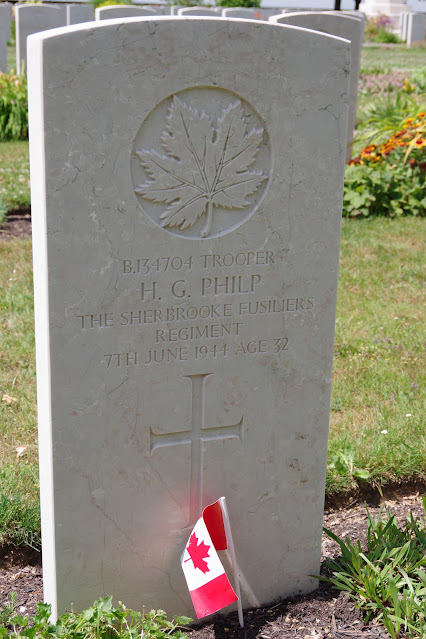

























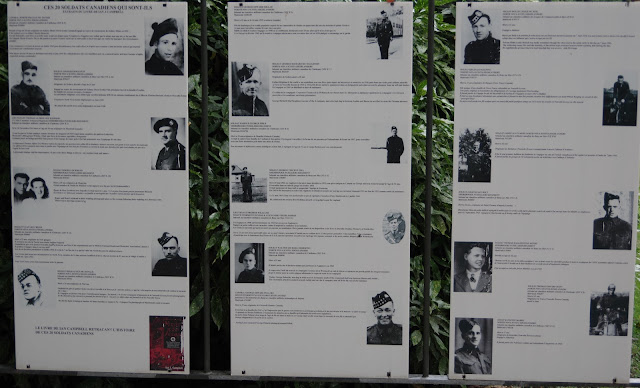









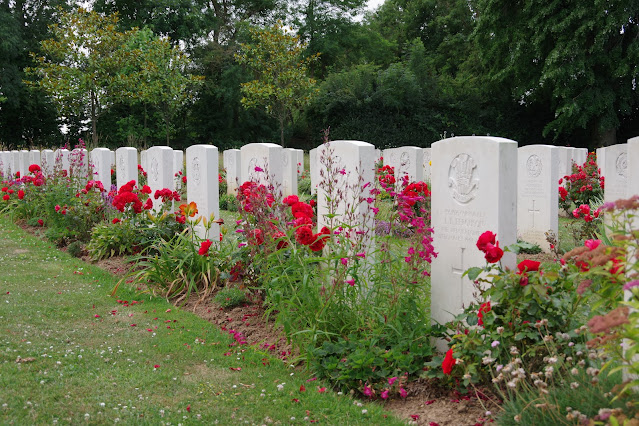











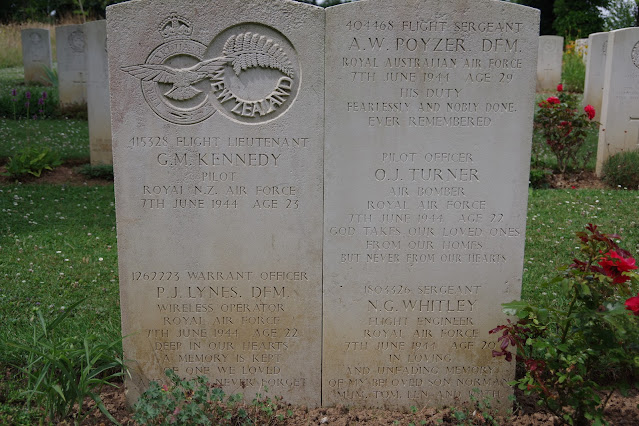
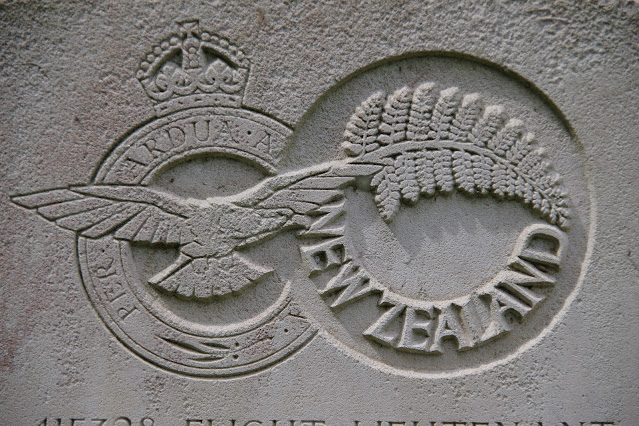

























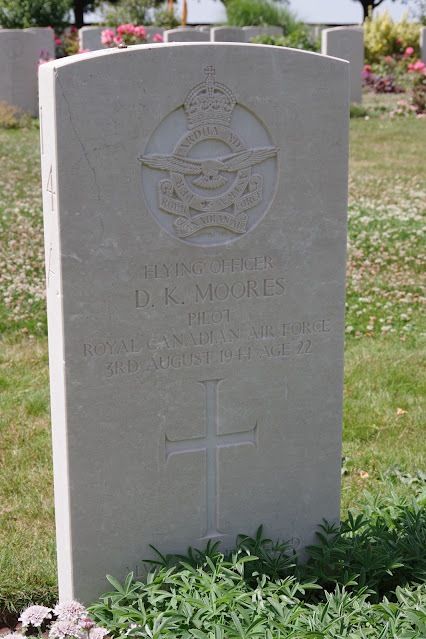












































































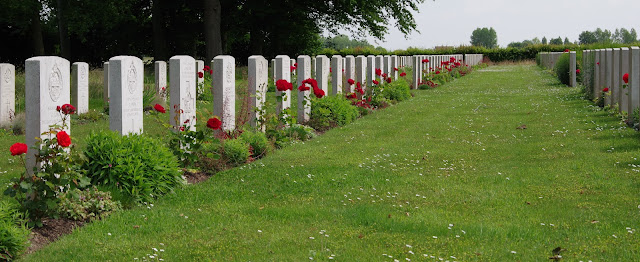




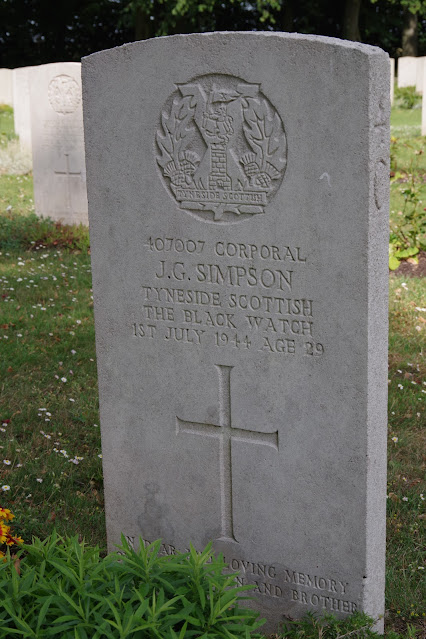












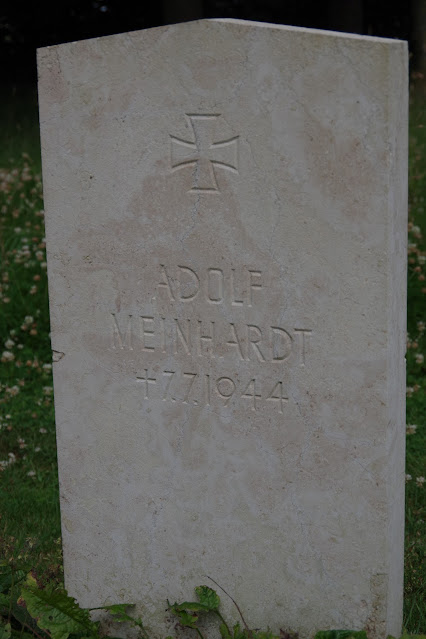




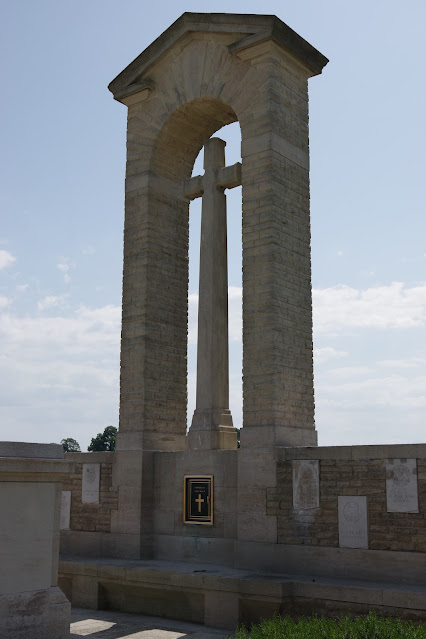






















History for us to remember, thank you Graeme. Brian Karim
ReplyDeleteLest we forget! A bundle of photos today Graeme! Thanks for taking all of them to share with your friends. Painful memories of these people and their sacrifices! May their Countries be proud of their soldiers!
ReplyDeleteFrom “Anonymous” ~ I looked up Kurt Meyer in Wikipedia to learn what happened to him after the war. By all accounts, the man was a brutal monster who managed to avoid the punishment he so deserved. Indeed, he lived on (after his return to Germany) to become exalted and even received an honorary funeral. Here is the link: https://en.wikipedia.org/wiki/Kurt_Meyer
ReplyDelete